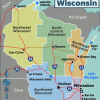Within the U.S. commercial market, the office sector is generating a greater wave of concern and pessimism from financial services leaders.
According to new data from CoStar Group (NASDAQ:CSGP), the U.S. office sector in April reported vacancy levels (at 12.9%) and leasing availability (at 16.4%) that were at record highs. Office vacancies spiked by 333 basis points (bps) since the end of 2019 and are now above their Great Recession peak, while availability increased 410 bps over the same period.
CoStar noted that while new leasing volume increased roughly 5% quarter-over-quarter, it was still 16% below the pre-pandemic average.
“Preliminary figures also indicate that the average size of new leases is shrinking again,as it did in the first 18 months of the pandemic era,” said the CoStar data report. “This could indicate smaller overall space needs as tenants continue adapting to both new ways of working and economic headwinds that have slowed hiring and could lead to layoffs.”
Furthermore, CoStar observed that occupied space per office-using worker is 12% below the 2015 level and has sunk to a record low. But this cannot be blamed entirely on the pandemic – CoStar reported the “ratio of space per worker decreased throughout the 2010s as offices ‘densified’ – and particularly as companies put more people into open-plan offices.”
“Had the long-term trend prevailed from the end of 2019 until now, square footage per worker would currently be 7.5% below where it was in 2015; thus, the pandemic has accelerated the trend by about five years,” the CoStar data report added. This acceleration means that organizations are occupying approximately 337 million fewer square feet than we would otherwise expect.”
Separately, Avison Young issued a data report that found office leasing activity in the first quarter of this year was 42.1% below the pre-Covid period. This was the second-weakest amount of office leasing activity recorded since 2001.
“Mounting financial services disruption, highlighted by the collapse of Silicon Valley Bank and several banking acquisitions, contributed to a temporary pullback in office demand,” the Avison Young report said. “Leasing activity is poised to rise as 2023 progresses – but is still unexpected to approach pre-Covid levels – as tenants capitalize on greater leverage and space utilization strategies come to realization. The quarterly increase of sublease supply could be stemmed by the anticipated continued rise of return-to-office efforts.”
Avison Young also observed there were $36.6 billion in potential at-risk office loans maturing by 2025.
“Continued office foreclosures, particularly properties encumbered by fixed-rate loans originated before 2021, are expected in the near term, including dispositions by institutional landlords with assets in gateway markets, as debt burdens rise while cash flows decline,” the report continued, citing a Trepp statistic that showed “the cost of debt has increased by 40-60% since 2021, signified by benchmark 10-year Treasury rates increasing by nearly 200 basis points, or 119%, from the beginning of 2022 to Q1 2023. Enterprising investors can capitalize on these distressed conditions when acquisition pricing becomes more palatable.”
Still, not everything was problematic: Avison Young noted that sublease availabilities reached a new record high in the first quarter, more than doubling from the levels in the first quarter of 2020. And tenants were enjoying a greater degree of control as their leverage power “accelerated in U.S. gateway markets, with landlords offering more generous free rent periods and tenant improvement allowances.”
In another data report, Cushman & Wakefield (NYSE: CWK) also highlighted the ongoing crisis with the U.S. banking industry as contributing to the office sector’s tumult, adding that “inflationary pressures, increased interest rates, tight labor markets and economic uncertainty” continue to dominate the uncertainty in this market.
“Occupiers have grown cautious, looking for cost-cutting opportunities,” the report said. “This is beginning to play out in the labor market, as layoff and hiring freeze announcements have grown and office-using employment growth has cooled. In this economic environment, office demand suffered again in Q1 2023. Leasing activity declined 23% quarter-over-quarter, hitting levels seen during the height of the pandemic in mid-2020. Absorption was negative for the 11th quarter out of the past 12, and the national office vacancy rate increased by 60 bps to 18.6%.”
As for the construction of new office properties, Cushman & Wakefield pointed to higher capital costs, supply chain hiccups, growing labor costs and “general doubt related to the office sector” as contributing to the market’s dismal health.
“The current pipeline, at 79 million square feet (msf), is at its lowest point since 2014, decreasing 42% from its first quarter 2020 peak of 135 msf,” the report added. “Deliveries this quarter were sub-5 msf for the first time since 2013, well off the 12.7 msf per-quarter average since the beginning of 2020.”














